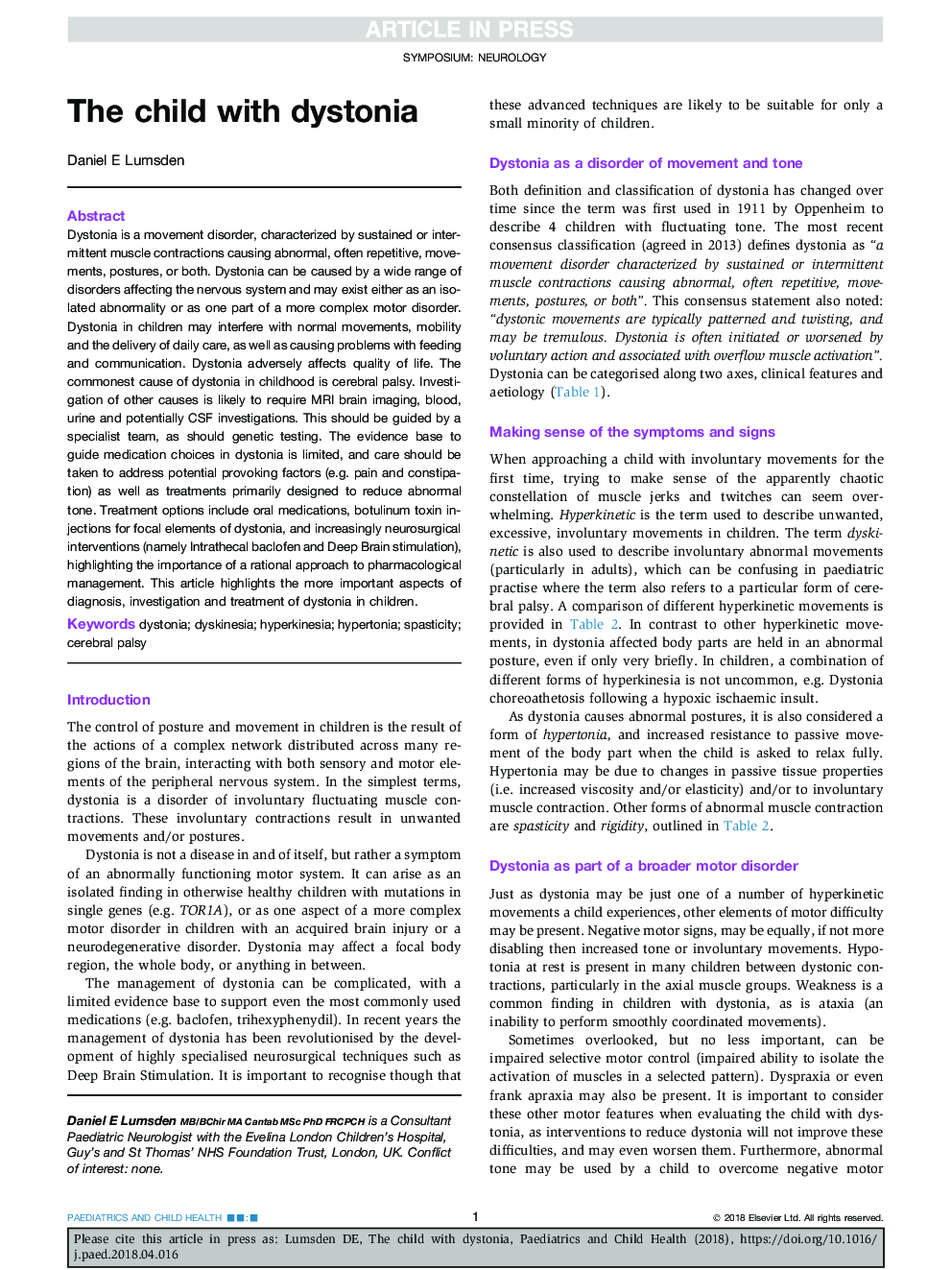| Article ID | Journal | Published Year | Pages | File Type |
|---|---|---|---|---|
| 11021888 | Paediatrics and Child Health | 2018 | 9 Pages |
Abstract
Dystonia is a movement disorder, characterized by sustained or intermittent muscle contractions causing abnormal, often repetitive, movements, postures, or both. Dystonia can be caused by a wide range of disorders affecting the nervous system and may exist either as an isolated abnormality or as one part of a more complex motor disorder. Dystonia in children may interfere with normal movements, mobility and the delivery of daily care, as well as causing problems with feeding and communication. Dystonia adversely affects quality of life. The commonest cause of dystonia in childhood is cerebral palsy. Investigation of other causes is likely to require MRI brain imaging, blood, urine and potentially CSF investigations. This should be guided by a specialist team, as should genetic testing. The evidence base to guide medication choices in dystonia is limited, and care should be taken to address potential provoking factors (e.g. pain and constipation) as well as treatments primarily designed to reduce abnormal tone. Treatment options include oral medications, botulinum toxin injections for focal elements of dystonia, and increasingly neurosurgical interventions (namely Intrathecal baclofen and Deep Brain stimulation), highlighting the importance of a rational approach to pharmacological management. This article highlights the more important aspects of diagnosis, investigation and treatment of dystonia in children.
Related Topics
Health Sciences
Medicine and Dentistry
Perinatology, Pediatrics and Child Health
Authors
Daniel E. Lumsden,
